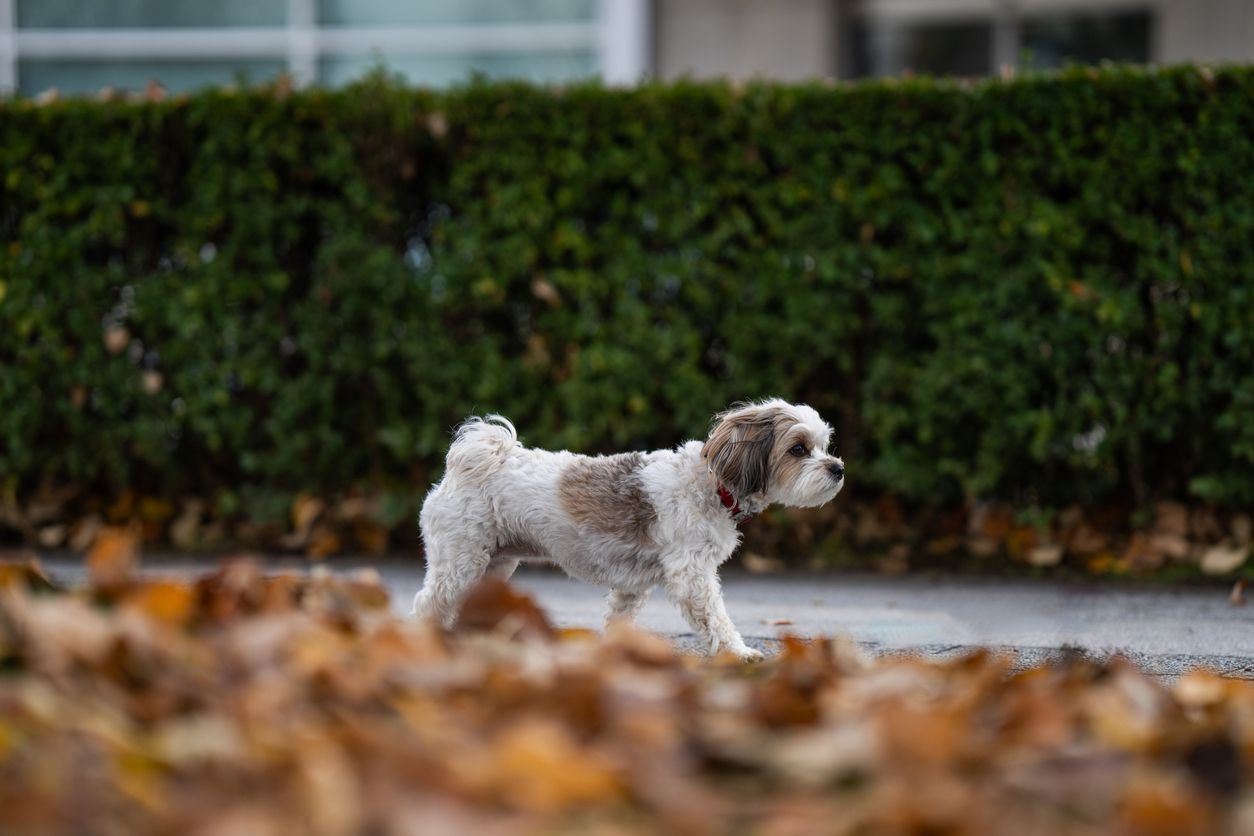Is my dog’s lump a skin tag or cancer? How to tell the difference
Finding a strange lump on your dog can be alarming. Sometimes, it’s hard to know whether that skin issue is nothing to worry about or a sign of skin cancer. Skin tags are common in dogs and nothing to worry about, but they can be confused for other types of skin growths. Read on to learn:
- What is a canine skin tag?
- How can I tell if my dog’s growth is cancerous?
- What should I do if I find an unusual growth on my dog?
- How will a vet diagnose and treat my dog’s skin growth?
- Can skin tags be prevented on dogs?
Dogs can develop many types of lumps and growths on their skin, especially as they grow older. Many, like skin tags, are nothing to be concerned about. However, malignant tumors can be deadly and confused with benign lumps on the skin. It’s always best to get a vet’s opinion on a new skin abnormality.
What does a canine skin tag look like?
Skin tags on dogs are often the same color as a dog’s normal skin tone, soft, and shaped like a long stalk or teardrop. Canine skin tags are usually hairless and are not uncomfortable unless they get injured or infected. Skin tags are benign and usually do not change shape, size, color, or spontaneously bleed. Minor bleeding may occur if the tag is injured. It’s important for pet parents not to confuse skin tags with moles, ticks, or nipples, which all have different shapes and colors from benign skin tags.
What causes skin tags on dogs?
The cause of skin tags is not fully understood. They are more likely to be found in areas where the skin is exposed to a lot of friction, such as in the armpits, skin folds, or under collars and harnesses. Overactive fibroblast cells in connective tissue in the skin can also cause harmless skin tag growths on dogs. Senior dogs and cocker spaniels, poodles, and miniature schnauzers are breeds with higher rates of occurrence of skin tags.
What does canine skin cancer look like?
There are multiple types of canine skin cancers and tumors that vary dramatically in appearance. Tumors can form in fat cells, connective tissue, oil glands, and hair follicles within the skin. Benign tumors are fairly common, so not all skin growths are cancerous. When grooming or petting your dog, watch for warning signs such as:
- Skin growths that change in size, shape, or color
- Growths that open, bleed, and don’t heal
- Growths that are different than the dog’s normal skin color

“Cancers and tumors on the skin can look like dark skin tags, warts, or sores of varying colors, sizes, and shapes,” explains Vetster veterinarian Dr. Jo Myers. “It is impossible to tell if a growth is cancerous from its appearance. Diagnostic testing is needed from a veterinarian to know for sure.” Common types of skin cancer in dogs include:
- Squamous cell carcinoma - raised, irritated, red, and often ulcerated lump on the skin
- Mast cell tumors - raised soft to hard lump within the skin that can be itchy
- Malignant melanoma - raised, often ulcerated lumps that can be gray or pink
Not all growths in dogs are cancerous tumors. Common benign tumors in dogs include:
- Lipoma - a soft, fatty tumor that can grow large in size under the skin
- Sebaceous adenoma - small, white, or pink, irregularly shaped tumors rising from the skin that can produce a greasy, white material
- Histiocytoma - small, red, button-like growths on the skin that freely move when touched, most common on the face or legs of younger dogs
Benign tumors can still cause problems in dogs if they become too large, develop in a problematic area, or become injured and infected. It’s best to get growths checked by a vet for an accurate diagnosis, even if you think they are benign.
What causes skin cancer in dogs?
It is not fully understood how our canine companions develop skin cancer, but it is likely due to multiple factors. UV radiation from the sun, exposure to certain chemicals, and some types of viruses are all shown to increase the risk of skin cancer in dogs. Some dogs are simply genetically predisposed to certain cancers, just like people.
What should I do if my dog has a skin growth?
If you notice a new bump or growth on your dog, it’s best to have it tested at a vet before assuming it’s ok to simply watch and wait. It’s especially important to get the growth checked quickly if it is changing rapidly or the dog is showing other signs of illness.
Should I remove my dog’s skin tags?
Before assuming a dog’s skin growth is a tag, get a confirmation from a vet. A vet can help remove tags if they are bothering your dog, in a location where they are likely to become injured, or if a dog has numerous tags. Skin tags can also be removed for cosmetic reasons. If removal is warranted, there are multiple treatment options a vet may recommend, such as freezing with liquid nitrogen or other forms of surgical removal. Treatment options depend on the dog’s individual situation, and the tags can be sent off for testing to ensure they are benign. Some skin tags simply fall off on their own. Do not attempt to remove a dog’s skin tag yourself—misdiagnosis, injury, or infection can occur.
How are skin growths diagnosed and treated by a vet?
A vet can test a skin growth to see if it is a cancerous or benign growth. Fine needle aspiration allows a vet to examine the cells under a microscope to determine if they are normal or cancerous. Taking a biopsy or submitting tissue samples after surgical removal provides the most conclusive information about a dog’s skin growth. Some growths and tumors can be removed surgically. If cancer is diagnosed, additional surgery, radiation, and chemotherapy, may be recommended.
Can I prevent skin tags on my dog?
Skin tags cannot typically be prevented and are usually nothing to worry about. However, offering soft places to rest and allowing dogs to take breaks from wearing collars and harnesses may help prevent tags from forming. If your dog develops multiple or frequent skin tags, ask a vet for advice.
FAQ - Is my dog’s lump a skin tag or cancer? How to tell the difference
Should I worry about skin tags on my dog?
Skin tags are usually benign and do not bother most dogs. However, tags may be irritating, get injured, or become infected. In these cases, a vet can remove the tag safely.
How do I get rid of my dog’s skin tags?
Canine skin tags are usually nothing to worry about and do not need to be removed unless they are bothersome or become injured or infected. It’s best to let a vet remove the tag to ensure it is done correctly and to prevent unnecessary injury, infection, or misdiagnosis of the skin tag.
Why is my dog getting skin tags?
What causes skin tags in dogs is not fully understood. Older dogs and certain breeds, such as mini schnauzers, cocker spaniels, and poodles, are more likely to develop them. Skin tags are also more likely to develop in areas that experience skin friction, such as under collars and in the armpits.
How can you tell the difference between skin tags and cancer?
Skin tags are the same color as a dog’s skin, soft, and shaped like a long stalk or teardrop. Skin tags are benign and usually don’t change shape or color or spontaneously bleed or rupture, but skin cancer often appears similarly in early stages. It’s best to get any new, unusual lumps or skin growths checked by a vet.
What are the most common cancerous skin tumors in dogs?
Skin squamous cell carcinoma and mast cell tumors are the most common forms of skin cancer in dogs. They can mimic other types of skin conditions, growths, and tumors, so it’s best to get any new growth on your dog checked by a vet.




